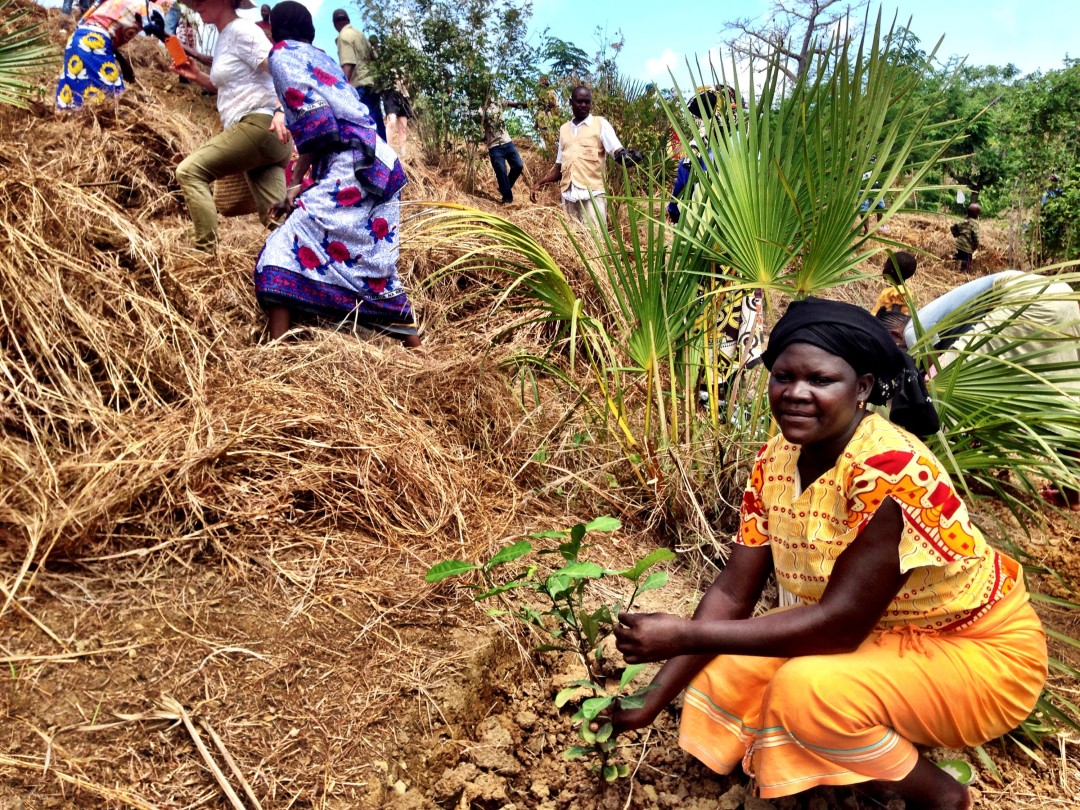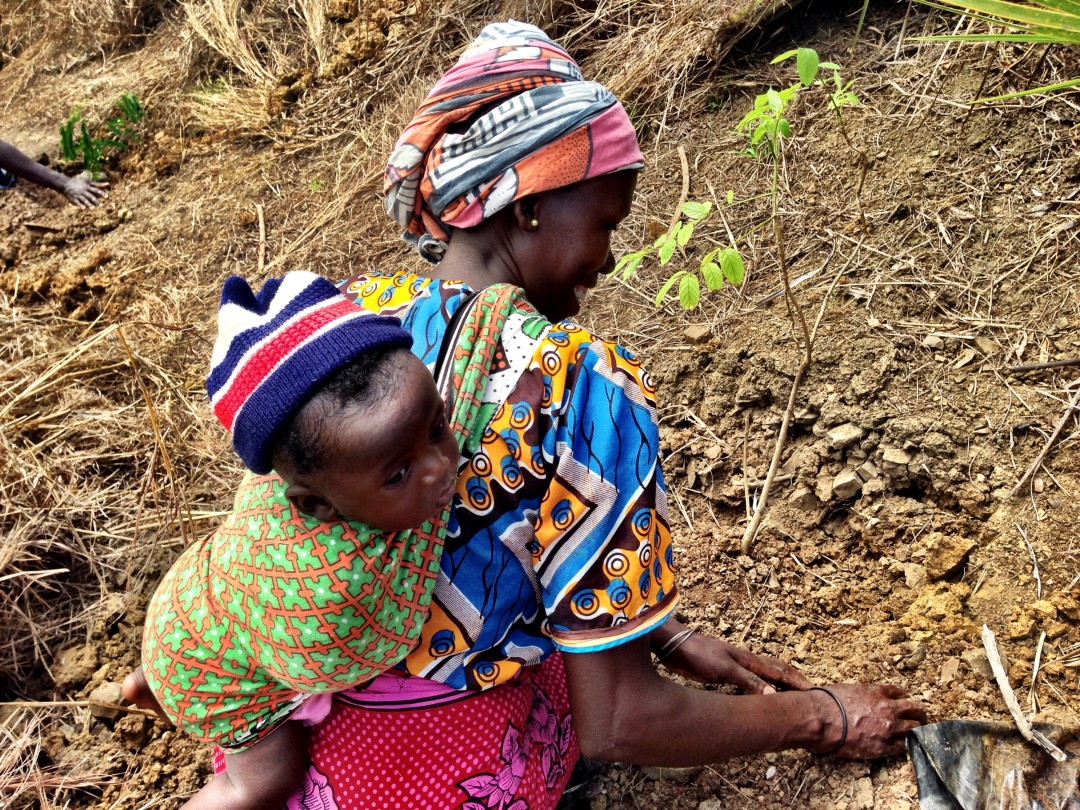Improving livelihoods
The project, conducted in a sub-district of Kisauni District, Mwakirunge region, aimed to support two rural farming communities. It was to implement the Haller Approach, a five-stage holistic model that enables vulnerable communities to restore their soils, build capacity, achieve economic security and improve the environment. Stage one ensured that communities achieved water security and accessed sanitation facilities. The second stage delivered “climate-smart” training for farmers at a demonstration training farm and in the community. Stage three introduced more advanced farming methods aimed at improving yields and enabling communities to earn an income. The final two stages, delivered throughout the project, consisted of community training in disease prevention, nutrition, hygiene and family planning.
Both of the targeted communities now have access to a rain-fed pond thanks to the building of a dam, and to a well and eco-toilets with washing facilities. The Mikomani dam is supporting 109 families (750 beneficiaries – of whom 630 are women and children) and the Mwangaza dam supports around 90 families (670 beneficiaries). Over 85% are women and children. The second and third phases of the Haller model leveraged the impact of these, now year –round, available water sources. Farmers were trained on improved soil practices and the shift from erratic cultivation to stallholder farming was achieved, providing the families with sustainable income. The community-driven training farm at Mtopanga is assisting farmers to develop a level of productivity that will enable them to sustainably provide for their livelihoods.
Founded in 2004, the Haller Foundation is a British charity. Its work is based on the techniques of Dr. René Haller, a Swiss environmental and tropical agronomy specialist. Its mission is to improve the livelihoods of farming communities in Africa.
Type
Health / Environment / Community Development / EducationDuration
December 2015 – June 2019Location
Mwakirunge region / KenyaWith whom
The Haller Foundation
Website


Kenya
Population
49.7 million (2017)
Per Capita Income
USD 1,460/year (2017)
Poverty rate *
36% (2015)
Literacy rate
79% (2016)
Human Development Index
142nd out of 189 countries (2018)
Kenya’s macro-economic conditions have progressed over the past decade, improving the welfare of its population. However, a quarter of its population lives in urban informal settlements, arid and semi-arid rural areas and remain vulnerable to poverty, conflict, structural underdevelopment and disease. Even though national absolute poverty has declined overall, it remains high compared with neighbouring countries. Primary school enrolment has reached 100%. Access to household services such as electricity, improved drinking water and sanitation has steadily increased, even though coverage remains low (23%, 47% and 33% respectively). Youth unemployment and vulnerability to climate change remain key challenges.
Sources: World Food Program, UNICEF, World Bank, 2016 Human Development Report, Human Development Indices and Indicators (2018 Statistical Update)
*The percentage of the population living below the national poverty line.